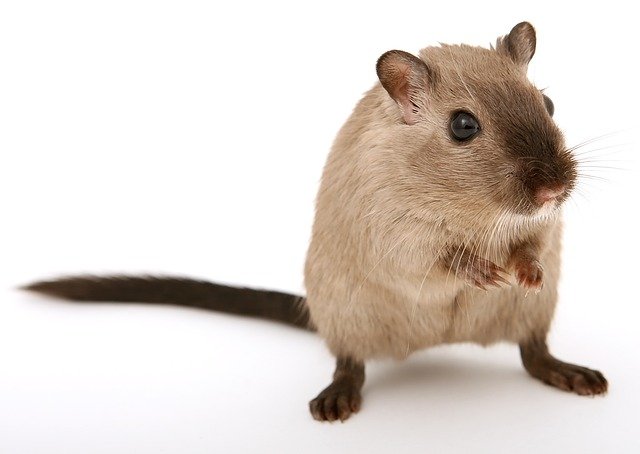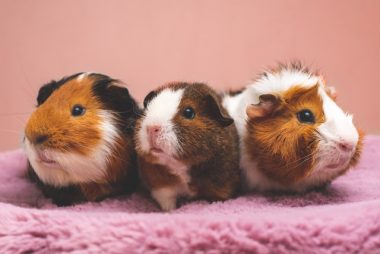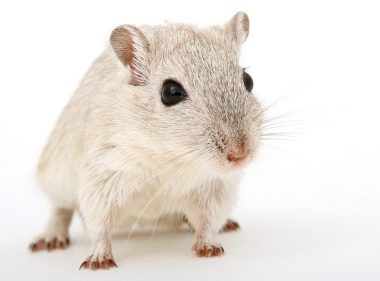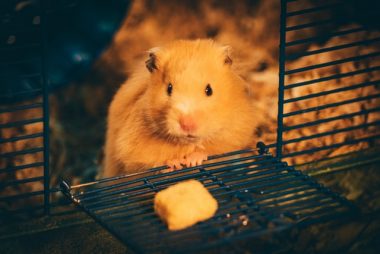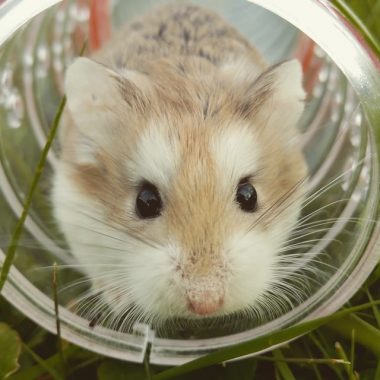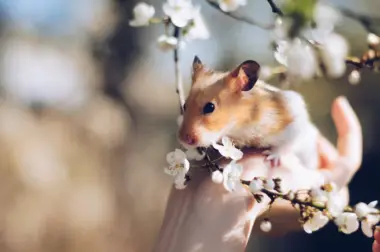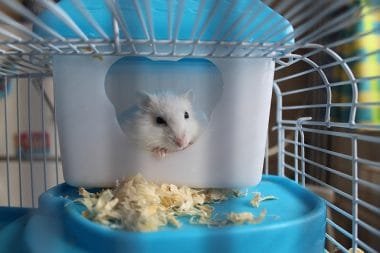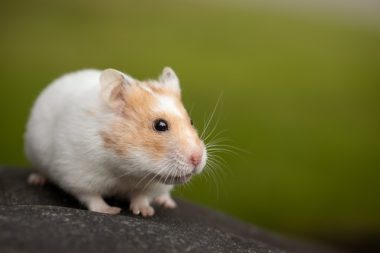It is easy to understand why hamsters and gerbils make such adorable pets the moment you see them in action and look at their petite features. When you look at them for the first time, you may find there are certain similarities between them. These include their little claws, incisor teeth, and their love for burrowing and digging. Both these creatures are fond of proteins, veggies, and fruits.
Then, what is the difference between a hamster and a gerbil? We will be explaining them in detail in the following sections.
Differences in behavior
We will now see what is the difference between a hamster and a gerbil in terms of their behavior in this section.
1. Personality
It is important to understand your pet’s personality. We are trying to refer to their characters and also how friendly they can be and their habits. Many people buy a tiny pet such as a hamster or a gerbil expecting that they should be able to handle it with ease. So, which is best?
We will begin with hamsters. They are slow and lethargic making them easy to handle. Even small kids can handle them easily. Their size is handy when fully grown signifying that you can grasp them securely and safely within the palm.
The downside though is that of all the little pets, hamsters are most prone to biting. They do not bite with malicious intentions. Rather they do it if startled, afraid, or would like to explore.
On the other hand, gerbils are the reverse because they rarely bite humans irrespective of the situation. It depends on how you raise them and handle them well at the age of 18-35 days. So, they are safer for your scared kids to handle. However, they can be acrobatic and fast and can climb, run around, and jump fast. It means although they do not tend to bite, you need to have a close tab on them.
2. Sociability
A major difference between these two pet rodents is how social they are. Mostly, hamsters can be territorial and solitary. They are so aggressive that fighting with other hamsters to death all occurs at times. However, if Dwarf hamsters are brought up together, they can live in harmony when adequate resources are available. On the other hand, gerbils are highly social in nature.
Physical differences
Hamsters have a stout body and have a stubby tail. On the other hand, gerbils are longer as compared to hamsters. Let us see the physical differences between the two under different heads.
1. Color combinations
Hamsters, as well as, gerbils are available in different types of colors. The colors of hamsters vary from cinnamon to white and from gray to brown and black. The fur of some hamsters can have a satin sheen while others have wavy hairs. Also, some of them have a dark stripe stretching on the back. Others feature a band of white-colored fur around their tummies.
Both genders of hamsters have long hair though it is much longer and fluffier in males. People who do not like fur can also opt for a hairless variety of hamsters.
Meanwhile, gerbils have dense, soft coats that come in different types of colors. There can be 40-50 distinct combinations and colors. These colors include reddish-brown, brown, tan, and gray with gray to white underpants. Additionally, some gerbil species also have dark spots on their heads while others have buff fur or patches of white behind their ears.
These tiny pets have long tails, which are thoroughly covered in fur, typically the same shade as that of the gerbil. Their tails resemble a paintbrush due to the tuft of thick fur.
2. Size
Hamsters are available in varying sizes and different varieties. For instance, Dwarf hamsters are just 2-3 inches long based on the breed. On the other hand, the Syrian is the largest and is around 6 inches long.
On the other hand, all pet gerbils belong to the Mongolian variety and they come in the same size. A gerbil is usually 4 inches long and has a tail, which is equally long. Its size is similar to that of a dwarf hamster rather than to the large Syrian hamster.
3. Legs
Hamsters, as well as, gerbils get up on the hind legs. However, the hind legs of a hamster are less powerful than the hind legs of a gerbil. Gerbils have longer legs and larger feet making them a great jumper. Hamsters, on the other hand, would not be jumping around. However, it can use the hind legs to sit comfortably.
4. Face
Although their faces are not identical, they both look cute. The face of a hamster is wider and rounder. It has chubby cheeks and tends to curl up into a little round ball of fluff.
On the other hand, the body and face of a gerbil are leaner. It has a longer face as compared to a hamster’s, which makes it resemble a mouse or rat.
5. Tail
It is another major difference between a hamster and a gerbil. The tail of a hamster is stubby and short. The Chinese hamster sports a slightly longer tail. However, none of the varieties of hamsters’ tails can match the fuzzy, long leg of a gerbil.
The tail of your pet gerbil is around 4-inch long. Its size is the same as the size of the rest of its body. While the tail is as long as that of a rat or mouse, it is not hairless but furry. There is also a slight tuft on its tip.

Caging
Hamsters are usually kept singly and they are satisfied in smaller cages as compared to a group of gerbils. Thus, caging for hamsters is less expensive. These creatures can be also kept in different types of enclosures. If you visit the local pet shop, a quick walk will make you aware of the different types of cages apt for hamsters.
However, gerbils can burrow extensively unlike a hamster that spends a short while making a nest. It will then curl up and go to sleep. On the other hand, gerbils spend most of their days digging.
Hence, only glass tanks can qualify as appropriate housing enclosures for your pet gerbils. If you put them in cages, they will drive you crazy by nibbling on its bars the entire day. They can eat the plastic base and escape out of it.
However, it is much more interesting to watch gerbils as compared to hamsters as they are so active throughout the day. A hamster will spend the entire day sleeping and is barely visible.
Differences in taking care
Hamsters, as well as, gerbils require a well-ventilated and clean cage having a solid base. The cage should also have a lot of bedding for them to burrow, chew toys, an exercise wheel, and a water bottle. Experts say that you should keep an 8-inch wheel. It is the perfect wheel size for hamsters and gerbils for their exercise.
According to some experts, hamsters require a minimum of three feet of floor space. If the cage is of a proper size, you can spot clean the nest and opt for a thorough clean out at a gap of 4-5 weeks.
On the other hand, an aquarium tank with at least five gallons capacity is recommended per gerbil. The enclosure should have a mesh lid. Gerbils urinate very little. Also, their poops are hard, tiny pellets. So, pet owners should clean the tank once in a fortnight.
Hamsters are anti-social creatures as mentioned earlier. Two hamsters over a specific age can fight so violently that it can even lead to death. Breeding hamsters can be a tough affair as well as the pair can split up very quickly after mating. As such, make sure to keep hamsters alone.
On the other hand, gerbils are much more sociable animals. They are not a problem if you house them in trios or same-sex pairs so that interaction can happen between them. You will often find a small group curling up together, which is an adoring sight for anyone.
However, one key downside of keeping a gerbil is that it can gnaw on anything. They will not even spare a new water bottle if you keep it inside the cage. The fate of a plastic toy is the same as it can be turned into dust very soon. In contrast though, a hamster will try to give a quick nip, which means your plastic water bottle is safe for several years. As such, although debatable, a hamster is easier to keep because it has a less destructive nature.
Lifespan
Sadly, both these critters do not live for a very long time. The average life span of a hamster is 2 years while that of a gerbil is three years. While there are incidents when both critters have survived beyond 4 years, it is rare.
Sleeping and lifestyle
Lifestyle is another criterion to determine whether hamsters or gerbils make better pets is their lifestyles. The major point we are trying to focus on here is that at what time is a hamster or a gerbil is likely to be active.
Hamsters are usually nocturnal in nature. It means that they sleep the entire day but remain awake throughout the night. The sleeping habit of this critter has led to some pet owners having issues in the past. That is because it is not appropriate to keep a hamster in the bedroom of their children. Also, the pet owner has to be possibly awake all night because of its exploration in the dark.
In contrast, gerbils can be awake during the day while they tend to sleep during the night. So, there is a better chance for pet owners to get proper sleep at night with gerbils in their homes.
Another point to consider here is that gerbils have an inquisitive nature and are very curious about everything they see. Pet owners will frequently find them exploring the cage or watching them as they carry on with their daily life. These creatures appear to be fond of coming out given a chance.
On the other hand, hamsters are usually lazier. These tiny animals love spending most of their time sleeping unless they are interrupted. If you wake up a sleeping hamster, it can be bad-tempered.
Conclusion
So, now you know what is the difference between a hamster and a gerbil. You also saw that both these creatures have their own set of strengths, as well as, weaknesses. It will be incorrect to point out that either of them is superior to the other.
Now that you know the differences between these two adorable rodents, the only way to determine is which one can fit better in your lifestyle. Thereafter, visit a pet store in your locality and try handling each before making the final choice.
